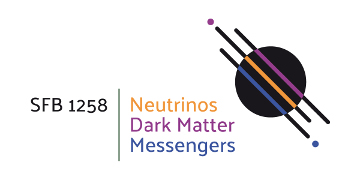Previous topical workshops & programs
International School of Subnuclear Physics 2025 Erice
14-23 June 2025, Erice, Italy, with Elisa Resconi and Stefan Schönert as invited speakers
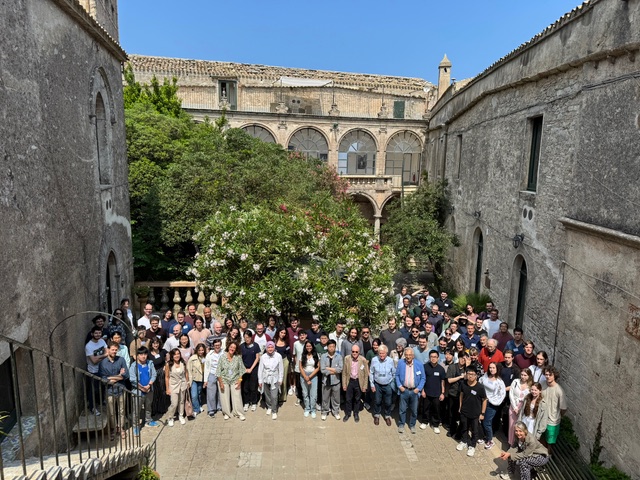
Subnuclear physics is the branch of scientific research in which phenomena connected with the detailed structure of the ultimate constituents of matter are studied. It is through these studies that scientists tries to challenge nature by discovering its fundamental laws. This knowledge is the essential origin of all technological development and forms the basis of all modern scientific thought.
The school aims, each year, to help specialists who are actively engaged in the most advanced research to become up to date on the most significant theoretical and experimental developments. Though applicants are selected as students primarily based on their scientific qualifications, geographical allowances are made to permit every country at least one participant.
Among the awardees of the 2025 edition of the International School of Subnuclear Physics are:
- Moritz Neuberger, doctoral researcher at TUM, who received the Masatoshi Koshiba Diploma
- Patrick Krause, former doctoral researcher at TUM, now postdoc at the Simon Fraser University, Vancouver, Canada, who was awarded a Milla Baldo-Ceolin Diploma
4th GraphNeT Workshop: Graph neural networks and beyond
6 - 9 May 2024, TUM IAS
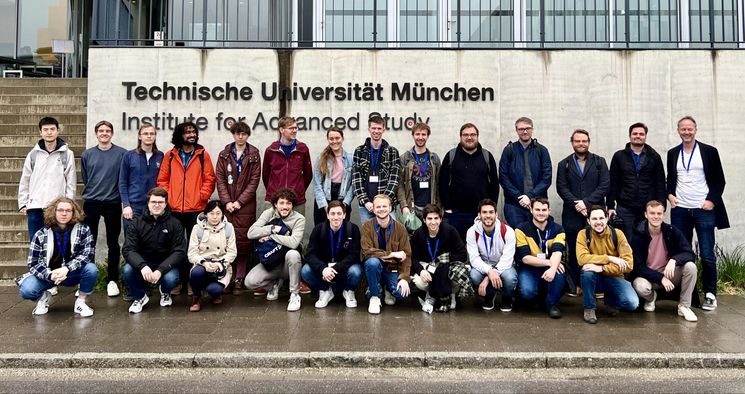
The workshop was dedicated to GraphNeT – A deep learning library for neutrino telescopes. The goal is to bring together researchers working at the intersection of neutrino telescope experiments and machine learning to meet likeminded researchers, discuss the latest progress, and develop new solutions to physics challenges by applying deep learning where it matters, using GraphNeT.
This May, we're celebrating the launch of GraphNeT 2.0 which extends functionality beyond graph neural networks into other deep learning paradigms like normalizing flows, transformers, autoencoders and several of the winning solutions from the IceCube Kaggle Competition.
The workshop, and particularly the two half-day hackathons, are focussed on putting the GraphNeT framework into use for physics — in IceCube, P-ONE, KM3NeT and other experiments. In this way, we hope to foster collaboration on common tools in order to advance physics research faster than individual experiments can on their own.
2nd edition Quarkonia meets Dark Matter
18 - 22 Mar 2024, TUM IAS
The second edition of the theory workshop "Quarkonia meet Dark Matter" continues to provide particle physicists a platform for exchanging knowledge and methodologies at the intersection of both fields. In the spirit of the first edition in 2021, this workshop aims to foster interdisciplinary collaborations, to expand field horizons, to generate new research directions, as well as to solve open problems by applying novel concepts from one field to another. Key scientific topics on the intersection include effective quantum field theories for heavy quark-antiquark states inside the quark-gluon plasma and dark matter pairs in the early Universe, non-equilibrium quantum field theories for describing the system's dynamics such as the open quantum system and the Keldysh-Schwinger formalism, as well as effective field theories in the strongly coupled regime and other techniques for describing phase transitions of QCD at colliders and of new physics particles in the early Universe, such as dark sectors and their associated gravitational waves production.
SFB1258 Xmas theory day
20 Dec 2023, TUM
Talks & discussion by doctoral students and postdocs of the SFB1258 or formerly SFB1258 on theoretical questions of the SFB1258 research program.
JUNO collaboration meeting & DCI training
9 - 13 Oct 2023, TUM
The JUNO European and American Collaboration Meeting in Fall 2023 took place at the Technical University of Munich (TUM) from 09.10.2023 to 11.10.2023, with an Distributed Computing Infrastructure (DCI) Training on the 12. and 13.10.2023.
MONA school: Introduction to Science Communication
13, 20 and 27 Oct 2023, TUM IAS
13 Oct
Why & how to communicate Science?
As a young scientist, you are busy conducting experiments, analyzing data, and much more to get your Master’s, Ph.D. thesis, or your following publication done. So why worry about another task: communicating your research to an audience that goes beyond your peers? We will discuss the reasons that might motivate an engagement and how science communication best works, especially with non-experts. Guest: Prof. Elisa Resconi, Spokesperson SFB1258
20 Oct
How Science gets into the media
In this session, we will talk about where and how journalists research their topics, the essential criteria for a topic to end up in the media, what role communication professionals play, and how you, as a scientist, can increase the chance that your research will be reported on. Guests: Ulrich Meyer, team leader press, spokesperson of the president, TUM Corporate Communications Center, Dr. Marlene Weiss, science journalist, head of dep. 'Wissen', Süddeutsche Zeitung
27 Oct
On writing well & and using AI as writing tool
We will discuss the tried and tested rules and guidelines for making your writing better and more accessible to someone outside your research area, which is also helpful for improving your scientific writing (with excercise). Afterwards, we will discuss and share experiences on the first months of using the AI tool ChatGPT. Journalist and Computer linguist Noelani Waldenmaier will report on how ChatGPT is already used in a large German publishing company. From the scientific side, Prof. Stefan Schönert will report on his experience. We will also look at the result of the interview with Prof. Elisa Resconi created by ChatGPT, which was led in Workshop Part 1.
Gran Sasso Hands-on 2023: PhD autumn school on experimental astroparticle physics
25 Sep - 6 Oct 2023, LNGS, L'Aquila
Gran Sasso Hands-on 2023 is an autumn school offering PhD students the unique opportunity of being directly involved in the research project activities at the Laboratori Nazionali Gran Sasso of INFN (LNGS), the world-leading laboratory for underground physics, astroparticle physics, and nuclear astrophysics.
The school is jointly organized by LNGS, the Physics and Chemistry Department of L'Aquila University (DSFC - Univaq) and the Gran Sasso Science Institute (GSSI) with the contribution of the Technical University of Munich (TUM).
The hands-on program will focus on General Relativity, Cosmic-ray physics, Dark matter searches, Neutrino physics, Nuclear astrophysics and Space-based detectors.
Students will be involved in a 10 day experimental project, in groups of 1-3 students per activity, under the supervision of the LNGS, GSSI and UnivAq scientists, with the goal of designing and performing a scientific experiment. A series of introductory lectures held by renowned field experts will provide the needed background for the proposed activities.
The selected students will benefit from an outstanding scientific context and will work in a multidisciplinary and multicultural environment. This represents an enriching personal experience and a good opportunity to establish contacts with other students and worldwide scientists.
Magnificent CEvNS school & workshop
22 - 29 March 2023, Carl Friedrich von Siemens Stiftung, Munich
The fifth edition of the Magnificent CEvNS workshop will put its focus on the process of coherent elastic neutrino-nucleus scattering (CEvNS) and will take place at the Carl Friedrich von Siemens Stiftung close to the Nymphenburg castle in the center of Munich. There will be a satellite workshop on March 25, 2023, bringing together new experimental approaches and new theoretical models. The workshop is followed by a CEvNS school (March 27 to March 29) aimed at students and postdoctoral researchers who may be new to the field of CEvNS. The satellite workshop and the school will take place at the Technical University of Munich in Garching. The workshop and school programs will include optional social activities.
Proposed in 1974, but unobserved until 2017, the physics accessible with CEvNS is extensive. Magnificent CEvNS aims to bring together a broad community of researchers working either directly or peripherally on CEvNS to foster enriching discussions, direct the field as it continues to grow, and form and strengthen connections between experimentalists and theorists/phenomenologists.
Topical Workshop: NGC 1068 as cosmic laboratory
6 - 10 March 2023, MIAPbP, Garching
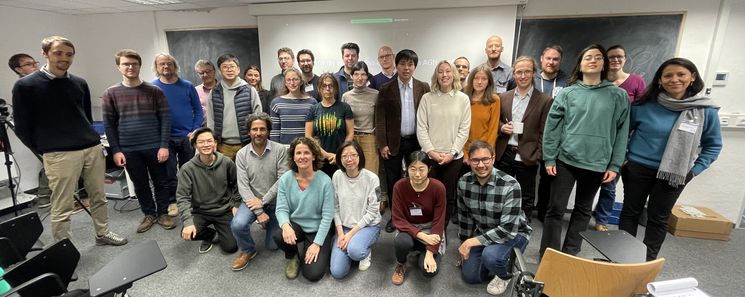
The IceCube collaboration recently reported 4.2σ evidence for high-energy neutrino emission from the direction of the active galaxy NGC 1068. This well-studied AGN optically classified as a Seyfert 2 is hosted by a nearby starburst galaxy and is also characterised by a powerful outflow. With this topical workshop, we would like to learn where we stand in understanding the nature(s) of NGC 1068 and specifically the origin of its neutrino emission from the observational and phenomenological perspectives. Possible cosmic ray production scenarios, and the constraints posed by neutrinos, will be discussed.
During the workshop, we hope to identify the most significant open questions and initiate useful collaborations to start paving the way towards understanding NGC 1068 and similar objects.
2nd GraphNeT workshop
15 - 17 Sep 2022, TUM MDSI, Garching
FemTUM 2022
31 Aug - 2 Sep 2022, TUM Garching
The initial idea of the workshop was to bring together the theory experts working on interactions of hadrons with strange content and experimentalists involved in the measurement of correlation functions of several hadron pairs by means of the ALICE data. After two years of deepening the cooperation, we will meet again in a hybrid format to discuss the status and the future opportunities of the the new ALICE data taking period. The program will focus on both experimental and theoretical aspects of: Two- and three- body interactions with strange and non strange mesons and baryons, interactions of deuterons with baryons and mesons, and strong interaction with charm hadrons.
2022 MONA summer school
18 - 21 July 2022, TUM Science & Study Center Raitenhaslach
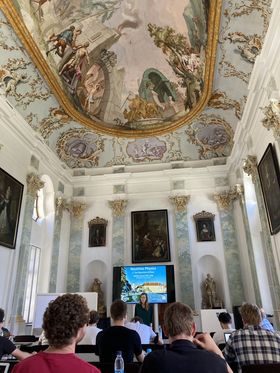
The MONA graduate summer school took place at the TUM Science & Study Center Raitenhaslach in Burghausen, Germany, from 18 to 21 July, 2022. Susanne Mertens, Alejandro Ibarra and Petra Riedel organized the school together with the student representatives; in total, 45 doctoral researchers, six lecturers, and the organizers partici- pated in the school. The lecturers were: Georg Raffelt (MPP) (Theoretical neutrino physics), Thierry Lasserre (CEA/TUM) (Experimental neutrino physics), Mathias Garny (TUM) (Dark matter theory), Federica Petricca (MPP) (Experimental aspects of dark matter searches), Irene Tamborra (U Copenhagen/TUM) (Messenger the- ory), Francesca Capel (TUM/MPP) (Experimental multi-messenger astrophysics). In addition to the lectures, the doctoral candidates presented their work at a poster session. The social activities included a guided tour through Burghausen Castle, a raft trip on the river Salzach, and a BBQ at Raitenhaslach Monastery.
Neutrino cosmology day
6 May 2022, MPA Garching
The purpose of the Neutrino Cosmology Day is to bring together all the people in the Munich area interested in neutrinos and their cosmological implications with the aim of fostering fruitful exchanges and collaborations among them. Some topics that will be discussed include: new results from neutrino experiments, neutrino imprints in the large-scale structure, neutrino interactions in cosmology and cosmological tensions, and article physics implication of current cosmological constraints.
Antinuclei in the Universe?
7 Feb - 4 March 2022, MIAPbP Garching
Cosmic-ray particles are a valuable probe of galactic processes. Correct interpretation of new data has potential for breakthrough results, such as the solution of the puzzle of cosmic-ray origin and the discovery of the effects of dark matter annihilation. The theoretical understanding of composite (anti-)nuclei formation in hadronic collisions, while tightly connected to the astrophysical application, is of interest in its own right. The precise measurement of anti-nuclei, like antiprotons, antideuterons, or anti-helium, is particularly informative since these particles are expected to be only rarely produced in conventional reactions. However, the interpretation of these measurements requires a good understanding of all involved processes to distinguish potential exotic contributions from ordinary production. This MIAPP program will bring together experts working on the different sections of the interpretation-chain and to discuss future efforts on the phenomenological and experimental side. The coordinators include L. Fabbietti and A. Ibarra.
Novel Hidden Sectors: From Colliders to Cosmology (2021)
August 2021, MIAPP, Garching
Strongly-interacting hidden sectors may be involved in the solutions to the key questions of fundamental physics: the naturalness problem, the identity of dark matter, and their possible interplay. Such hidden sectors are featured in a wide variety of theoretical models, ranging from composite Higgs and neutral naturalness models, to multi-component, strongly-interacting dark matter. Their experimental signatures are diverse, significantly broadening the parameter space of dark matter candidates beyond the WIMP paradigm, and motivating a host of novel LHC searches. This program will bring together beyond-the-Standard Model and lattice theorists, as well as experts on collider and cosmology/astrophysics experiments, in order to make progress on the wide spectrum of theoretical possibilities, and on their experimental implications. The program is coordinated by J. Harz, among others.
13th conference on the Identification of Dark Matter (2020)
20 - 22 July 2020, HEPHY, Vienna (online)
The aim of IDM was to draw a complete picture on the current knowledge of dark matter from cosmological scale down to particle physics, from accelerator searches to recent results in indirect and direct detection and to give a glance on future prospects and technological advancements on the endeavor to identify dark matter. The conference was co-organized by J. Schieck.
Axion Cosmology
February and March 2020, MIAPP, Garching
This program focused on dark matter axions, their cosmological generation and possibilities of their direct and indirect detection. The organization involved two PIs (B. Garbrecht, B. Majorovits) and one Mercator Fellow (J. Redondo) of this CRC. Particular highlights concerned ultralight axions as fuzzy dark matter, the formation of axion dark matter from strings in the phase transition of quantum chromodynamics, the design of dark matter haloscopes as well as pulsars as a possibility of indirect detection of axion dark matter through radio emission. About 15 external as well as local graduate researchers participated in the event.
Dynamics of Large Scale Structure Formation
September 2019, MIAPP, Garching
This program brought together experts working on the very active topic of large-scale structure (LSS) of the Universe, both in theory and observations. Improving our theoretical understanding of LSS is essential to fully exploit the information from the new large-volume galaxy surveys that will become available in the coming years, and make progress on fundamental open questions in cosmology (inflation and non-gaussianity, acceleration, neutrino masses, properties of dark matter). An important objective was to stimulate exchange between the communities working on the theoretical description of LSS and on observational campaigns. The group of coordinators included M. Garny.
Probing the Quark Gluon Plasma with Collective Phenomena and Heavy Quarks (2018)
August/September 2018, MIAPP, Garching
Experiments at the Relativistic Heavy Ion Collider (RHIC) and at the Large Hadron Collider (LHC) study the properties of the quark-gluon plasma (QGP) produced in ultrarelativistic heavy-ion collisions. Measurements of collective phenomena and heavy quarks have fundamentally changed our understanding of the QGP. There is overwhelming evidence that the QGP, while composed of deconfined partons, still remains a strongly coupled system. The QGP is also dense and hot enough to cause significant energy loss to the heavy charm and bottom quarks as well as dissociate even the strongest bound heavy quarkonium states. This program brought together experts in the community to review the progress, discuss open questions and foster new collaborations. Among the coordinators was L. Fabbietti.
Invisibles2018 school
28 August - 2 September, TUM Science & Study Center Raitenhaslach, Burghausen
Stefan Schönert and Georg Raffelt organized this Summer school together with the leaders of the Horizon 2020 Innovative Training Network ITN Elusives as a joint CRC-ITN Elusives event. In total, 70 doctoral researchers and MSc students, five lecturers, five tutors, and the organizers participated in this international school. Lectures and tutorials were held on the following topics: "The birth of (non-stellar) neutrino astronomy: multi-messenger astrophysics and active galactic nuclei" by Paolo Padovani (ESO), "Axion and ALPs: a broader view" by Jörg Jäckel (University of Heidelberg), "DM without prejudice" by Kathryn Zurek (Lawrence Berkeley National Laboratory), "Neutrinos with focus on non-oscillation physics" by Kate Scholberg (Duke University), "Classical solutions in field theory" by Andrew Cohen (Boston University). In addition to the lectures and tutorials, the doctoral candidates' work was presented at several poster sessions. The social activities included a guided tour through Burghausen castle, a raft trip on the river Salzach and a BBQ at Raitenhaslach Monastery.
Geant4 workshop
16 - 19 April 2018, Garching
This event was organized by PI M. Agostini and doctoral researcher E. Mondragón Cortés. The course presented a comprehensive overview of the main characteristics of the Geant4 Monte Carlo toolkit, including Geant4 installation for Linux, geometry, tracking and physics processes. The goal of the course was to make the participants able to install Geant4 and to implement their own simple Geant4-based applications. Two international lecturers, Dr. Luciano Pandola and Dr. Giada Petringa (both from INFN, Laboratori Nazionali del Sud (LNS)), were invited.
Talking about the Invisible: Introduction to science communication
summer term 2018, biweekly, Garching
The course was designed to give an overview of international (science) media, to train the writing skills and to initiate contributions for the SFB1258 website. The course started with a panel discussion on “How science journalists work” at the TUM Institute for Advance Study with two science media journalists as guests. The event was open to all SFB 1258 members. The aim of the course was to create new web-content as well as a growing awareness of what journalists need from scientists on the part of the SFB 1258 scientists. The course was held by P. Riedel.
The High Energy Universe: Gamma Ray, Neutrino and Cosmic Ray Astronomy
February/March 2018, MIAPP, Garching
The goal of this program was to identify the efforts required to bring the multi-messenger astronomy community closer to the discovery of the most energetic accelerators in the Universe. The questions discussed were: What are the sources making up the cosmic neutrinos detected by IceCube? Are these connected to the long standing mystery of the ultra high energy cosmic rays? How are cosmic rays accelerated and how do they lose energy during their propagation? Important clues hide in the details of the astrophysical scenarios, in the theoretical modelling, in the observational power of gamma-ray telescopes like Fermi, Magic, H.E.S.S, Veritas, HAWC, and CTA, and in the data collected by on-going experiments like IceCube, the Pierre Auger Observatory and Telescope Array. Among the coordinators were E. Resconi and P. Padovani.
Supernova Neutrino Observations: What can we learn and do?
9 - 13 October 2017, Mainz
Observing the neutrino burst from the next nearby core-collapse supernova (SN) is perhaps the most coveted target of low-energy neutrino astronomy (few to few tens of MeV). Several existing or planned large detectors world-wide will produce high-statistics signals, dwarfing the two dozen neutrinos observed from SN 1987A, the only such measurement to date. Moreover, the diffuse SN neutrino background (DSNB) from all past core-collapse events in the universe is coming into reach with the foreseen gadolinium-enhanced version of Super-Kamiokande in Japan and the JUNO scintillator detector being built in China. The experimental landscape is evolving rapidly, primarily driven by neutrino oscillation physics, and by advanced gravitational wave detectors becoming operational. This Topical Workshop involved around 30 leading experts in these areas was meant to interface these communities with the goal to develop a better definition of the observational targets (What can we learn?) and conversely of the deliverables that should be provided by neutrino and SN theory as possible benchmarks for detector optimization and observation strategies (What should we do?). The workshop was coordinated by H.-Th. Janka and I. Tamborra, among others.
Automated, Resumed and Effective: Precision Computations for the LHC and Beyond
July/August 2017, MIAPP, Garching
Precise predictions for collider processes are crucial to interpret the results from the Large Hadron Collider (LHC) at CERN. The goal of this program that was held in was to bring together experts from different communities in precision collider physics (diagrammatic resummation vs. effective field theory, automated numerical computations vs. analytic approaches, etc.) to discuss the latest advances in jet physics, higher-order computations and resummation. The coordinators included M. Beneke and R. Frederix.
Astro-, Particle and Nuclear Physics of Dark Matter Direct Detection
March 2017, MIAPP, Garching
The program revisited the currently favored paradigm for dark matter direct detection through a dialog between theoretical and experimental experts in astro-, particle and nuclear physics. Fostering substantial progress in the theory of dark matter scattering by nuclei, and in dark matter astronomy, it aimed at drastically improving the present strategies for direct detection data analysis. The coordinators included A. Ibarra and F. Petricca.
